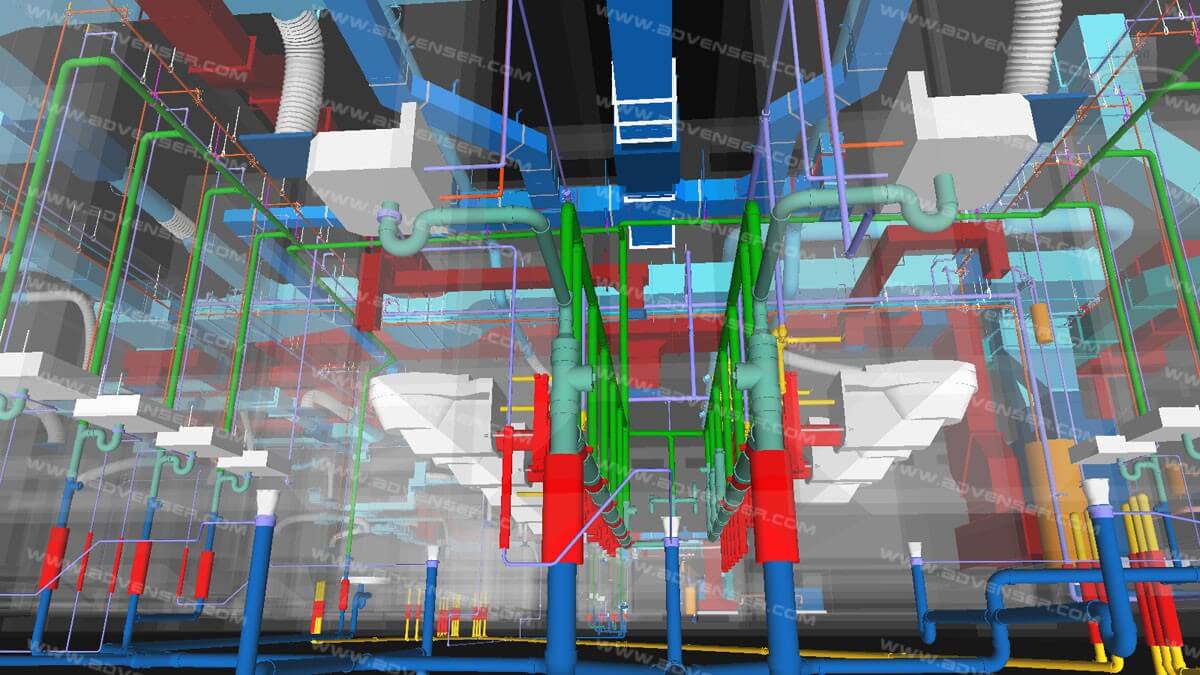The future of MEP BIM Modeling Services holds immense potential. With the integration of cutting-edge technologies like AI and IoT, these services will usher in an era of unparalleled precision and efficiency in construction. Buildings will become smarter, capable of real-time monitoring and predictive maintenance, leading to reduced costs and enhanced sustainability. Virtual and augmented reality will revolutionize design and maintenance processes, while cloud-based collaboration will foster seamless communication among project stakeholders. Prefabrication and sustainability practices will further drive efficiency and environmental responsibility.
MEP Services are at the forefront of a construction revolution, shaping a smarter, greener, and more interconnected future.The future of MEP BIM Services is a thrilling landscape where innovation knows no bounds. As technologies continue to advance, MEP systems will become smarter and more interconnected. Here are some glimpses of what the future may hold:
IoT and Smart Buildings
The Internet of Things (IoT) will play a pivotal role in shaping the future of MEP systems. Buildings will evolve into intelligent entities where various components are interconnected and communicate seamlessly. Here’s what the integration of IoT means for MEP BIM Modeling:
Real-Time Monitoring: IoT sensors will be embedded within MEP systems to monitor performance in real time. These sensors will collect data on temperature, humidity, energy consumption, and equipment status. Any anomalies or issues will trigger automated responses, leading to quicker problem resolution.
Predictive Maintenance: IoT-enabled MEP systems will predict maintenance needs based on actual usage and wear-and-tear. Instead of adhering to rigid maintenance schedules, buildings will undergo maintenance precisely when required. This approach reduces downtime, prolongs equipment lifespan, and minimizes costs.
Energy Optimization: IoT sensors will continuously assess energy usage within a building. Smart algorithms will adjust HVAC systems, lighting, and other MEP components to optimize energy consumption based on occupancy and weather conditions. This proactive approach to energy management enhances sustainability and reduces utility bills.
Occupant Comfort: MEP systems will respond in real time to the needs and preferences of occupants. For example, lighting and temperature can be adjusted automatically based on occupancy and individual preferences, leading to enhanced comfort and productivity.
Virtual and Augmented Reality Applications
The integration of virtual reality (VR) and augmented reality (AR) will transform the way MEP systems are designed, installed, and maintained:
Design Visualization: Designers and engineers can use VR to immerse themselves in the MEP systems’ virtual environment. This level of immersion facilitates better design decisions and identifies potential issues before construction begins.
Training and Maintenance: AR applications will provide on-site technicians with real-time guidance during installation and maintenance. Technicians can wear AR glasses that overlay digital information onto the physical MEP systems, guiding them through tasks and providing instant access to manuals and schematics.
Cloud-Based Collaboration and Data Management
The future of MEP BIM Modeling Services will undoubtedly be cloud-centric:
Collaboration: Cloud-based platforms will enable real-time collaboration among project stakeholders, regardless of their location. Architects, engineers, contractors, and owners can access and work on the same MEP BIM models simultaneously, fostering efficient communication and decision-making.
Data Management: The cloud will serve as a secure repository for MEP BIM data. This data can be accessed from anywhere, ensuring that all project stakeholders have the most up-to-date information at their fingertips. The cloud’s scalability also accommodates the increasing volume of data generated by IoT sensors.
AI-Powered Insights: Cloud-based platforms will leverage AI to provide actionable insights from MEP BIM data. These insights can identify trends, optimize systems, and suggest improvements, ultimately contributing to better project outcomes and operational efficiency.
Prefabrication and Modular Construction
The construction industry is witnessing a shift towards prefabrication and modular construction methods. MEP BIM Modeling will play a pivotal role in these trends:
Prefab Components: MEP systems can be designed and manufactured off-site as modular components. These components can be precisely engineered in factory settings, ensuring quality control and reducing on-site installation time.
Efficiency and Quality: Prefabrication not only accelerates construction but also enhances quality control. MEP components can be thoroughly tested before installation, reducing the likelihood of defects or system failures.
Cost Savings: Prefabrication can lead to cost savings by minimizing on-site labor and construction time. It also reduces waste generated during construction.
Sustainability and Green Building Practices
Sustainability remains a central concern in construction, and MEP BIM Modeling Services will continue to contribute to greener buildings:
Energy Efficiency: MEP BIM models will incorporate advanced simulations for energy efficiency. Designers can test various HVAC, lighting, and insulation configurations to identify the most energy-efficient solutions.
Environmental Impact: BIM will enable a comprehensive assessment of a building’s environmental impact. This includes evaluating the carbon footprint, water usage, and waste generation. Architects and engineers can make informed decisions to reduce these impacts.
Renewable Energy Integration: As renewable energy sources become more prevalent, MEP BIM Modeling will facilitate their integration into building designs. Solar panels, wind turbines, and geothermal systems can be seamlessly incorporated.
Material Selection: MEP BIM models will consider the environmental impact of materials used in construction. Designers can choose sustainable and recyclable materials, reducing a building’s overall environmental footprint.
In Conclusion
Engisoftengineering MEP BIM Modeling Services are poised to revolutionize the construction industry, not just for their current capabilities but also for the limitless possibilities they bring to the future. As AI, IoT, virtual reality, and other advanced technologies continue to evolve, MEP systems will become smarter, more efficient, and more sustainable. Buildings will transform into intelligent entities that respond to the needs of occupants while minimizing energy consumption and environmental impact.
The role of MEP BIM Modeling in this transformation cannot be overstated. It serves as the bridge between traditional construction methods and a future where precision, efficiency, and sustainability are paramount. In this future, buildings are not static structures but living systems that adapt and evolve to meet the ever-changing demands of the modern world. It’s a future where every MEP component, from the smallest valve to the largest HVAC system, plays a part in creating buildings that are not just structures but integrated ecosystems designed for the well-being of humanity and the planet. The future of construction precision has arrived, and it’s called MEP BIM Modeling Service.
Read More : https://blogozilla.com/nothing-bundt-cakes-a-delightful-treat-for-every-occasion/



